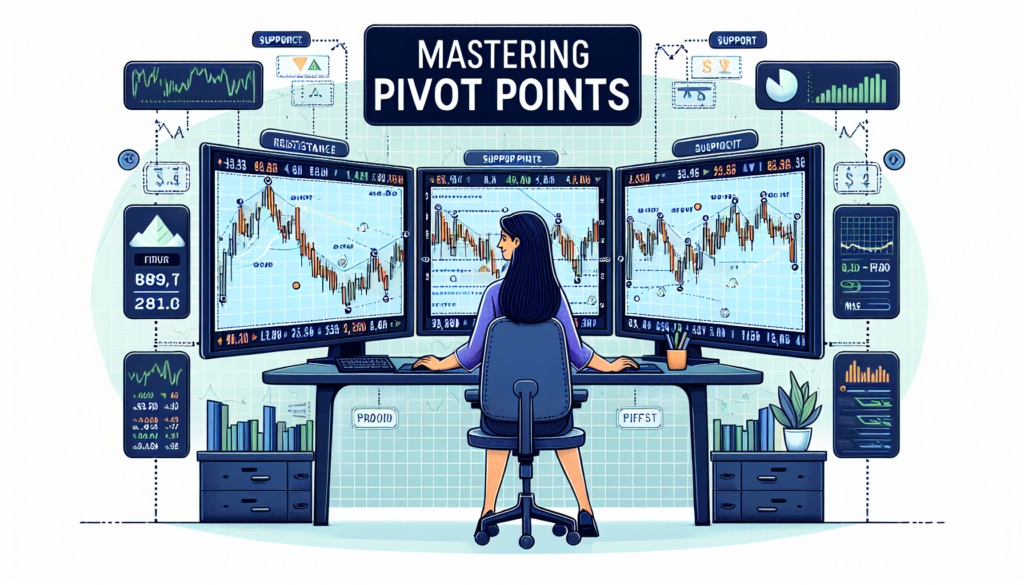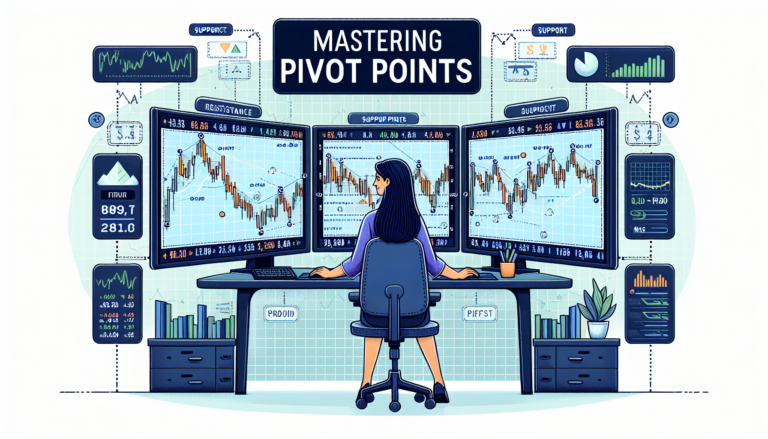Mastering Pivot Points: Taking Your Day Trading to the Next Level
Day trading can be a tough yet rewarding venture, and it is always evolving, offering endless opportunities to learn and grow. One crucial tool every day trader should have in their toolbox to conquer the associated complexities is the understanding and use of pivot points. This blog post dishes out the essentials of pivot points, how to calculate them, and methods to harness their power to make well-informed day trading predictions and decisions.
Understanding Pivot Points
Pivot points are a valuable type of technical analysis used by traders to determine critical price levels for the day ahead. They’re calculated using the high, low, and closing prices from the previous trading day, with the pivot point representing the average of these three values. Generally, if the current day’s trading is above the pivot point, it would be an indication of a bullish market, while trading below the pivot highlights a bearish tendency.
Calculating Pivot Points
The pivot point formula is simple, but accurate, offering traders a clear picture of potential market movements. It’s calculated as follows:
Pivot Point (P) = (Previous High + Previous Low + Previous Close)/3
In addition to the pivot point, traders typically also calculate support and resistance levels, known as pivot point support and resistance levels, to provide further depth to their analysis.
Resistance level 1 (R1) = (2 x P) – Previous Low
Resistance level 2 (R2) = P + (Previous High – Previous Low)
Support level 1 (S1) = (2 x P) – Previous High
Support level 2 (S2) = P – (Previous High – Previous Low)
These support and resistance levels provide traders with potential price levels where reversals or continuation of trends may occur, hence playing a pivotal role in decision-making.
Implementing Pivot Points
Understanding pivot points and navigating through them can drive success in intraday trading. These calculated points help traders to predict potential price movements, which can be utilized in planning their entries, exits, and stop-loss strategies. However, note that while pivot points give a useful framework, they should never be used in isolation. They work best when combined with other technical indicators, such as RSI, MACD, or specific chart patterns.
Many trading platforms come with built-in pivot point calculators or indicators, saving traders time and reducing the risk of errors that might occur in manual calculations. However, manual calculation affords a deeper understanding and familiarity with these crucial points, thereby refining your decision-making capabilities.
Conclusion
Pivot points are a straightforward yet exceptional addition to the toolkit of any day trader. Their calculated values and interpretations provide great trading insights, which when combined with other technical indicators, can enhance your trading strategy significantly. Nonetheless, like any other trading tool, they’re not foolproof; hence maintaining a balanced approach that incorporates other technical analyses is critical. Day trading involves higher risks than other trading styles, and using these tools can significantly mitigate those risks towards achieving higher remaining rates of return.
To up your day trading game, start utilizing pivot points today, watch the market trends unfold, grasp the flow and wave it to your advantage – happy trading!

